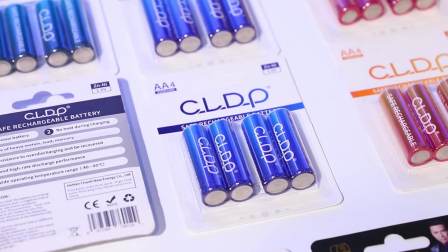Product list of zinc-nickel battery
1/3
1/5
Factory AA Size Nickel Zinc 1.6V Battery USB 1800mWh Replace 1.5V Li-ion rechargeable battery AA
$1.55 - 1.70/Piece
9 years in business
Henan Chaoli New Energy Co., LtdTrading Area:Global
1/5
1/5
1/5
1/5
CLDP High Power Ni-Zn 1.6v aa size 1500mWh Nickel Zinc Rechargeable Battery For Digital Camera
$1.55 - 1.70/Piece
9 years in business
Henan Chaoli New Energy Co., LtdTrading Area:Global
1/5
CLDP new type rechargeable Zinc Nickel USB Type-C AA radio rechargeable battery with usb
$1.65 - 2.32/Piece
9 years in business
Henan Chaoli New Energy Co., LtdTrading Area:Global
1/3
High quality 1.6v Zinc-nickel battery 1800mwh Type-C oem rechargeable electric shaver aa battery
$1.55 - 1.70/Piece
9 years in business
Henan Chaoli New Energy Co., LtdTrading Area:Global
About zinc-nickel battery
What is a zinc-nickel battery?
A zinc-nickel battery is a type of rechargeable battery that uses a combination of zinc and nickel for its electrodes. These batteries offer high energy density, long cycle life, and relatively low cost compared to other rechargeable batteries.
How does a zinc-nickel battery work?
A zinc-nickel battery works by converting chemical energy into electrical energy through a series of electrochemical reactions that take place in the battery's electrodes and electrolyte. During discharge, zinc atoms in the negative electrode (anode) oxidize to form zinc ions and electrons, which flow through an external circuit to power a device. At the same time, nickel ions in the positive electrode (cathode) react with the electrons to form nickel hydroxide. During charging, the process is reversed and the nickel hydroxide is converted back into nickel ions.
What are the advantages of using a zinc-nickel battery?
Zinc-nickel batteries have several advantages over other types of rechargeable batteries, including high energy density, long cycle life, and relatively low cost. They are also environmentally friendly since they do not contain toxic or hazardous materials.
What are the applications of zinc-nickel batteries?
Zinc-nickel batteries are used in a variety of applications, including portable electronic devices, hybrid and electric vehicles, and renewable energy systems. They are also used in military and aerospace applications due to their high reliability and performance in the harsh environments.
Are zinc-nickel batteries safe?
Yes, zinc-nickel batteries are considered to be safe and stable, and are not prone to catching fire or exploding like other types of rechargeable batteries. However, like all batteries, they should be handled and disposed of properly to avoid any potential hazards.






